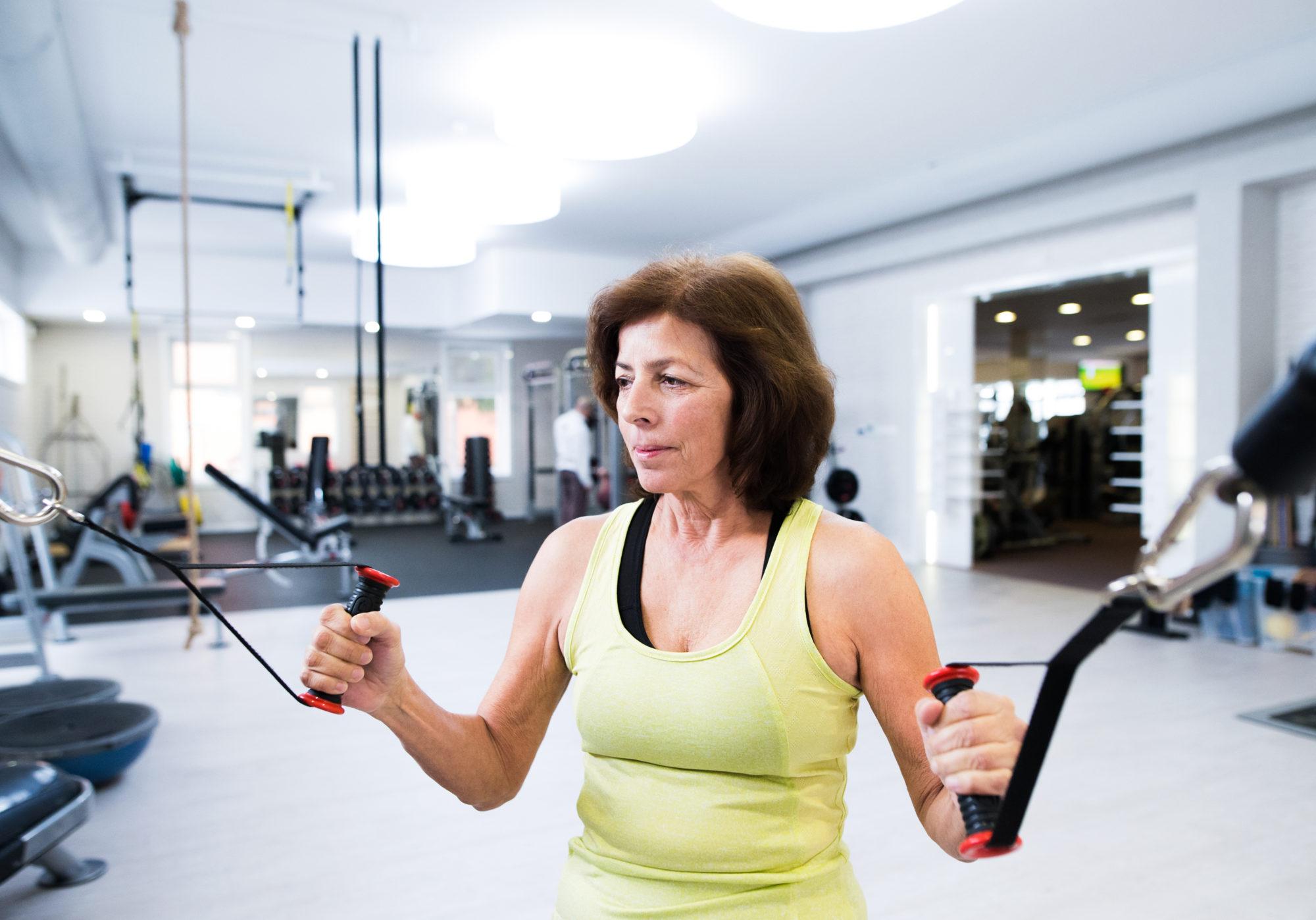Because You Need to be Stronger!
2020 has finally come and gone. But that nagging shoulder or back pain is now getting in the way of your New Year’s resolution to be more active. You may have thought the past 6+ months of rest allowed the injury to heal and let the pain go away. But now that you’re moving again, the pain is back.
But WHY?
One possibility is that your body is now in a weakened state that can’t support the activity. Research shows that for people with knee arthritis, their knee pain is directly related to the strength of their quadriceps muscle NOT necessarily the severity of their arthritis. So, if you never intentionally train your body, it will never gain the strength, power, and endurance that it needs to keep up with life’s demands.
Sadly, after age 30, our body begins to undergo a process called sarcopenia. Sarcopenia is the gradual loss of muscle mass and subsequent strength. It accelerates with each decade of life especially for women after menopause. So, if an adult becomes injured and cannot reach their typical level of physical activity, the effects of sarcopenia will continue and continue.
BUT, it’s not all bad news.
Studies have shown that even women above age 80 reversed the effects of sarcopenia with a structured resistance training program conducted 2-3 times per week for 8-12 weeks. Not only did they improve their strength and muscle mass, but they also increased their bone density and reduced their risk of falling. So if you have a persisting injury, sarcopenia and its deconditioning effects may be why you are still hurting with movement and exercise. But remember, sarcopenia can be reversed.
You may now be wondering: how does a person become stronger without further hurting themselves especially when exercise causes their pain? The first step in the road to recovery is a thorough assessment of your current physical ability. We need this baseline to tell us where to start with creating a resistance training program. An evaluation by one of our physical therapists will identify the unique areas that need to be strengthened.
At Impact, one way we measure a person’s strength is through a process called “1 Rep Max” testing (1RM). We use a strength gage and various straps to isolate a muscle and see how many pounds of force it can maximally produce. We often compare one arm or leg’s strength to the other especially when one side is injured. From that initial assessment, it is important to load the muscle above its current ability.

Depending on your goals, that load will vary. See below for some general guidelines for resistance training for different fitness goals:
- Muscle Endurance – 30-50% of 1RM for 2-3 sets of 15-25 reps.
- Muscle endurance is important for continuous movements like walking, swimming, or cycling.
- Muscle Hypertrophy – 50-75% of 1 RM for 2-4 sets of 10-15 reps.
- Be careful of this category – just because these muscles get bigger does NOT mean they produce more force. Instead, they only gain bulk.
- Muscle Strength – 75-90% of 1 RM for 3-5 sets of 6-8 reps.
- This type of strength allows you to move a heavy load a few times. This can be helpful for standing from a chair, lifting a bag of fertilizer, or picking up a small child.
- Muscle Power – 30-60% of 1 RM for 3-6 reps with speed.
- Power is the ability to move a load quickly. So, we reduce the resistance level to allow for the muscles to move faster. This can be helpful for crossing the street quickly or throwing a ball across the yard.
It is often a good idea to select exercises that match your functional goals and needs. See our previous blogs in the past 12 months for some other general ideas for exercises and how to develop your exercise program.
Conclusion
And again, consulting one of our physical therapists will help structure the personalized routine for you. From years of experience, our physical therapists have seen how months, even years, of muscle weakness have caused unnecessary pain and restricted function. But on a brighter note, our staff have helped countless clients overcome their pain through appropriate resistance training programs regardless of age, injury, or fitness goal.

